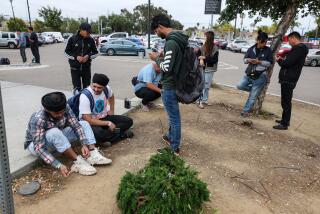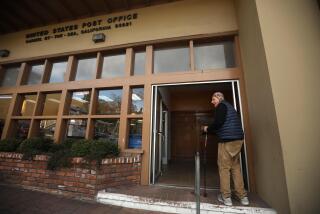211 Line for Social Services in Works
Led by efforts in Los Angeles, Orange and Alameda counties, California is gearing up to provide yet another three-digit phone number -- 211, to serve callers needing quick referrals for emergency social services.
The new 211 service is expected to be available starting in 2004 for most state residents, assuming that the various sponsors of the service can find help of their own -- money to fund the program.
Nonprofit referral organizations will help callers to 211 find help for such problems as homelessness, terminal illness, hunger and spousal abuse. Without a three-digit number, callers often struggle to find help, organization leaders said.
A Los Angeles County nonprofit organization, Info Line of Los Angeles, is expected to receive approval from the Public Utilities Commission for its 211 line next month. Orange County’s Info Link will submit an application this month to operate a similar line. Alameda County already has submitted its request.
“The hope is that 211 would be used as much as 411 or 911,” said Maribel Marin, executive director of Info Line of Los Angeles, which has offered referrals through seven-digit and toll-free numbers for 22 years.
In 2000, the Federal Communications Commission, guardian of the scarce three-digit phone numbers, set aside 211 for social service calls. More than 21 states have 211 hotlines. The FCC also designated 511 for traffic information, and 711 as a code to reach operators to help the deaf and speech-impaired make calls. Neither is yet operating in California.
Lynn Pesely, state coordinator for 211 California, an umbrella group representing the nonprofit referral agencies, said 62% of Californians will be served by 211 in 2004, when San Diego, Riverside, Sacramento, Ventura and San Francisco counties also are expected to begin their three-digit social services hotlines.
Officials at referral services who have studied the impact of the three-digit hotlines say that once established, they gain popularity through word of mouth and are used twice as often as lines with more digits. Studies have shown requests for social-service referrals doubled in some cities after 211 was established.
“We are conditioned to remember numbers like 911 and 411,” said Lori Warrens, executive director of the Alliance of Information and Referral Systems, a professional group that represents referral agencies. “The problem can be that 211 becomes too popular too quickly.”
Establishing 211 service will require nonprofits to double operations at a time when funds are scarce. In Los Angeles and Orange counties, officials have not secured funding.
In Orange County, Info Link operates on a $250,000 budget. Three employees handle 27,000 calls annually from 8:30 a.m. to 4 p.m, said Angie Baur, executive director. Once 211 operates 24 hours a day in late 2004, eight more employees and $750,000 more annually will be needed, she said.
Baur said she is looking to police agencies, cities and foundations to find more funds.
Marin said she expects Info Line, a $5-million annual operation that receives 350,000 calls each year, to double its volume. She is working with county officials to determine who will pay for additional employees.
Warrens said that nonprofit referral agencies will likely highlight how 211 can make more efficient the use of scarce funding by directing callers to what they need, instead of using the resources of several nonprofit social service organizations.
“California has been hit hard. It presents a challenge for 211 but it’s also an opportunity,” said Warrens.
“With the economy hit so hard, you need access and efficiency more than ever.”
More to Read
Sign up for Essential California
The most important California stories and recommendations in your inbox every morning.
You may occasionally receive promotional content from the Los Angeles Times.










